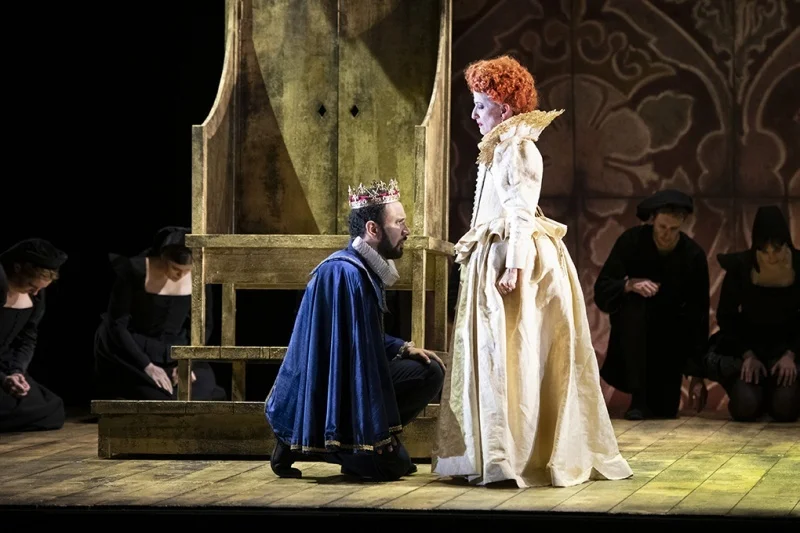THE GIRL ON THE TRAIN AT THE ARTS THEATRE
What is it about trains and murder? Authors who presumably have never been on a real railway, seem to think that they are the ideal setting for an exciting crime thriller. Perhaps it’s a misunderstanding of the term ‘bullet train’? In their world, no one can get on the 8 15 without witnessing a murder, encountering a vanishing lady or bumping into a stranger who plans to kill his wife. The reality of course is that for most sardine-like commuter journeys there isn’t space to sit down and catch a glimpse out of a train window of some ghastly goings on in murderous Metroland.
Last night’s offering at the Arts, The Girl on the Train is a central player in this genre. A mysterious disappearance of a woman involving an apparent witness on a railway journey and a plethora of potential assailants each with a strong (loco) motive. Based on the best-selling book by Paula Hawkin and box office smash hit movie starring Emily Blunt, can there be anyone who does not know the plot? Yes, tis I. Having never seen the film or read the book, I had no idea of the storyline in advance and thus sat in the stalls ready to do what a thriller should do, to thrill.
Was I thrilled? Sadly not. The show had all the tension and scary drama of a journey to Ashwell and Morden. Whatever the merits of the film and book, this theatrical version by Rachel Wagstaff and Duncan Abel was strangely dull and decidedly un-thrilling (perhaps it shows that two heads are not always better than one). I won’t reveal the plot except to say that a successful and happy young woman, Megan, has gone missing. Regular train passenger Rachel Watson has seen something from her train window that might lead to the truth. Think Hitchcock’s Rear Window on rails.
The production by Anthony Banks starts promisingly: a menacing underscore, darkness, a flashing stage-wide screen depicting a hurtling choo choo, a burst of light revealing a mournfully gazing lady and a mysterious woman in red. I was pre-thrilled. But then as the lights came up fully, the play seemed to hit a red signal and chug ever so slowly towards a somewhat tedious terminus.
Some unconvincing acting aside, the main culprit here was the cliché-filled script (Agatha Christie on a very bad day) and some surprisingly leaden direction. Samantha Womack plays Rachel, a sinking alcoholic who has lost everything; her job, her dignity and her husband Tom. Perpetually drunk (well, in the first half) she has seen something from her daily train ride to nowhere that could help solve the sudden disappearance of Megan, a close neighbour of her ex’s whose back balcony can also be spotted from the speeding carriage. The only problem with Rachel as a witness is that she can’t remember important stuff – there is a black hole in her memory where the vital clues should be. Her vodka-induced amnesia makes life difficult for investigating detective D.I. Gaskill (and even harder for the audience). Womack does a decent job of making palpable Rachel’s drunken decline. Unwashed and boozy, throwing up into an old pizza box, it is not a pretty sight. The trouble here is in Womack’s delivery which is constantly at ear-aching pitch and her inebriated fixed frown gives little room for any kind of psychological subtlety.
There are some moments of good drama – a convincing performance by Naeen Hayat as Megan’s former therapist and John Dougall brought some welcome light and shade to the part of the standard has-been cop you always see in Thriller World. For everyone else, the production gave them little or nothing to play on except to be pawns in a convoluted whodunit where plot trumps people.
The sets, by John Cotterill didn’t help either. Down and out Rachel seemed to live by the front door of a tiny filthy kitchen (the door led out to an improbable blackness) which boxed in the action such as key moments between her and her estranged former husband. By contrast the sets for Tom’s house and that of Scott (Megan’s hubby) were far too large often trapping actors behind unnecessary sink units or huge sofas. That said for the most part, players were given very little to do except stand around and expose the plot via lots of shouting.
If like me you’ve never seen the film or read the book, the play provides a modicum of entertainment and will keep you guessing – rather like waiting for the next train to King’s Cross.






